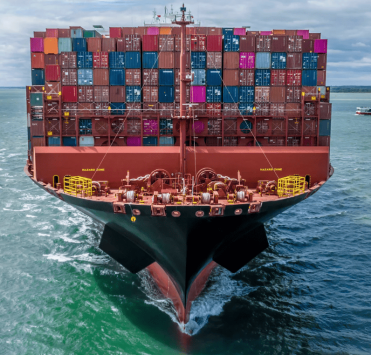Calculating the cost of international transport: important parameters and advice

Calculating the cost of international shipping is a complex process involving many factors that can vary significantly depending on the mode of transport, route and specifics of the shipment. First of all, it is necessary to determine the type of transport: air, sea or land transport. Each of these types has its own peculiarities and tariffs. For example, air freight is usually more expensive, but it is faster and more reliable for urgent or valuable shipments. Sea freight is cheaper than air freight, but takes longer and requires consideration of many additional factors such as port fees and possible delays at the port. Land transport is used for shipments within continents and can include road and rail, each of which also has its own unique rates and conditions.
Another important aspect is the transport route. The length of the route, the presence of intermediate stops and transit points can have a significant impact on the overall cost. For example, routes through busy ports and airports can be more expensive due to high competition and additional charges. The specific nature of the cargo also plays a key role. Cargoes that require special storage conditions, such as refrigerated containers or vans for foodstuffs or special packages for dangerous goods, increase costs. Cargo insurance should also be considered, as international shipping involves various risks such as theft, damage or delays. It is also important to consider in advance the possible costs of customs duties and fees, which can vary.
1. Type of transport
Road transport: The cost of transport is calculated on the basis of several parameters:
- Type of transport: standard tilt truck or refrigerator, standard tanker truck or tanker truck with autonomous heating on the way.
- Type of cargo: Dangerous or non-hazardous, bulk or packaged.
- Distance: A major factor affecting cost.
- Weight and volume of the shipment: It is important to consider both the actual weight and the volumetric weight.
- Additional tolls: Tolls for using motorways or bridges.
Sea transport: Containerized transport is often used for large, bulky cargo and long distances. Key factors include:
- Delivery conditions: Depending on the delivery conditions, transport costs may vary considerably.
- Freight Cost: The basic charge for a shipment, which may vary depending on the route, sea line and current demand.
- Container type: Use of 20-foot or 40-foot containers as well as specialised containers such as refrigerated containers.
- Port charges: Charges for cargo handling at ports, including unloading and loading of containers.
- Demurrage and detente: These are both factors that must definitely be considered.
- Transhipment: The cost of transhipment from the container to a standard tilt truck must be taken into account.
Air transport: The fastest but also the most expensive mode of transport:
- Weight: The main parameter for calculating the cost, and both actual and volumetric weight are taken into account (using the formula: (Length × Width × Height) / 6000).
- Urgent delivery: Costs may increase significantly if express delivery is required.
- Additional fees: Includes security fees, fuel surcharges and airport handling charges.
Rail: Used to transport large quantities of goods over long distances overland:
- Distance and route: Basic parameters for costing.
- Weight and volume of the shipment: As with other modes of transport, both are taken into account.
- Terminal operations: Additional costs for loading, unloading and handling cargo at railway stations.

2. Weight and volume of cargo
Correctly determining the weight and volume of the shipment is critical to accurate costing:
- Actual weight: The actual weight of the shipment, measured in kilograms or tonnes.
- Volumetric weight: Estimated weight that takes into account the volume of the cargo occupied, especially important for air freight (e.g. (Length × Width × Height) / 6000 for air freight).
4. Additional fees
In addition to the basic cost of shipping, it is important to consider a number of additional costs:
- Customs duties and taxes: Charged when importing goods into the destination country, depending on the type of cargo and its value.
- Insurance: Recommended to protect the cargo against possible loss or damage, the cost depends on the value of the cargo and the level of cover.
- Handling: Includes labour and equipment used to handle cargo at origin and destination.
- Warehousing: Temporary storage of cargo in warehouses, may be necessary in case of delays or the need to consolidate shipments.
5. Type and value of cargo
- Different types of cargo may require special transport and handling conditions:
- Dangerous Goods: Requires compliance with special rules and regulations, which may increase the cost.
- Perishable goods: The need for temperature control and fast delivery.
- Oversized: Special authorisation documentation must be obtained in advance.
6. Documentation
The costs of preparing and completing the necessary documents such as bills of lading, invoices, certificates and permits also affect the total cost.
- EX1 and EUR.1: In the case of road transport from the European Union under EXW (Ex Works) delivery conditions, the responsibility for the shipment of the goods lies with the consignor. The minimum set of documents to be issued by the sender includes the invoice. In this case, additional costs associated with EX1 and EUR.1 will be borne by the consignee (buyer).
Approximate calculation
For example, let's consider the carriage of standard cargo by road from Germany to Ukraine:
1. Cargo weight and volume: 2000 kg, volumetric weight - 2 m³.
2. Distance: 2000 kilometres.
3. Base rate: €1.2/km.
4. Additional Fees:
- EX1 and EUR.1: 200 euros.
- Insurance: 50 euros.
Bottom line:
- Base cost: 2000 km × 1.2 euro/km = 2400 euro.
- Additional fees: 200 + 50 = 250 euros.
- Total cost: 2400 + 250 = 2650 euros.
Calculating the cost of international shipping requires a comprehensive approach and the consideration of many factors, from the characteristics of the shipment to the route and customs requirements. Each of these aspects can have a significant impact on the overall cost and quality of the shipment, so it is important to approach the process with due care and attention.
Turning to professional logistics companies can greatly simplify the task, providing accurate costing and competent solutions to all arising issues. Experienced specialists will help to develop an optimal transport plan, which will help to avoid unforeseen expenses and ensure timely delivery of cargo to its destination.









